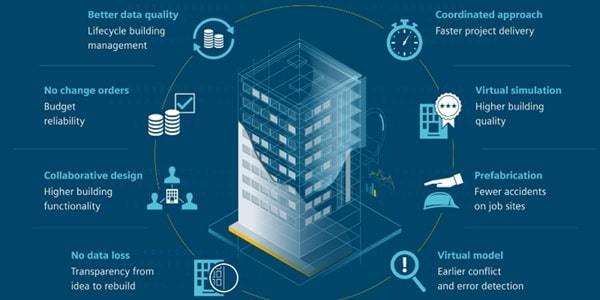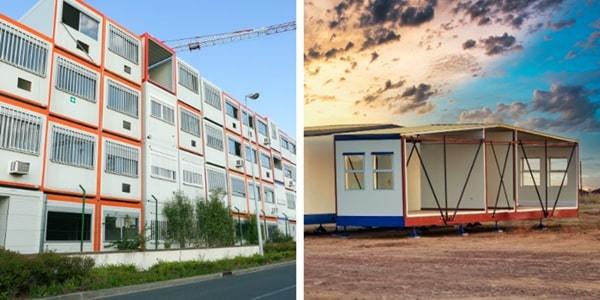Featured Image Caption: How Construction Shapes Living Spaces
Jump to read...
When you walk down your avenue, walk through the bustle of a city centre, or sit in your living room, it’s likely you’re not even noticing all that space you’re seeing was once an idea before, made real by building. Building is more than steel, concrete, and bricks. It’s the quiet power that permeates our lives, our cities, and even our sense of place.
If you’ve ever watched a new skyscraper rise on your block or a closed-down factory turned into a thriving civic complex, you’ve witnessed the face of construction transformed. A construction company in St Louis, for example, doesn’t just build homes-they’re rehabbing neighborhoods, putting people to work, and building communities.
From the buildings we cherish to the cities we cherish, building is woven into the fabric of how we live, work, and interact.
Let’s explore how construction touches us, from the house we call home to society as a whole.
Relationship between Development and Construction in the City
Not just a successful development that is a building, but it is a positive influence as well. As regards future dwellers’ needs, the surroundings, and future expansion, building ventures can alter blocks, even cities.
It is more about cooperation between the city government, citizens, and constructors so that the new structures are for everyone and not just privileged classes.
Management is the key. New building relies on the utilization of advanced machinery and tools that allow them to control schedules, finances, and materials.
Not only does this establish them with success, but it also reduces interference with normal life. Quality building creates spaces that will last for years—spaces where individuals want to work, reside, and play.
How Construction Facilitates Urban Renewal
Urban renewal is the redevelopment of ageing. It’s not redevelopment of run-down buildings; it’s getting neighborhoods in shape, livable ones. That’s what construction does:
Revitalizing Ageing Infrastructure
Most cities have ageing roads, bridges, and public infrastructure. Redevelopment of those infrastructure networks is to enhance the area so it is safer, decongests chokepoints, and makes the neighborhood more appealing to residents and businesses.
Picture it: smoother journeys, safer highways, and steadfast water and power—all the spin-offs of smart building.
Inexpensive and Green Housing
Shortages of homes don’t occur in one place alone. Green products, solar panels, and compact floor plans save consumers money and decrease the demand on the environment. Mixed-use development—live, shop, socialize in one place—is creating healthy walkable communities.
Rehabilitating Empty Properties
Abandoned houses and decaying buildings drain the life from a community. Reclaiming them as something productive: vacant factories as thriving business districts, empty lots as parks, and decaying warehouses as museums. How? Through hearing what the people have to say and involving them.
Local Economies and Job Creation
They all employ architects, engineers, contractors, and suppliers. But it affects the community too. Development creates employment, boosts property values, and sends tax dollars that can be spent to cover schools, healthcare, and government services. It’s a great economic growth spur.
Enhancing Public Spaces and Green Spaces
Good cities are more than stacks of buildings—rather, they’re places where people come to congregate, kick back, and socialize. Parks, park-and-recs, and sidewalks make us more comfortable, get us out more, and encourage social interaction.
Green building and sustainability practices encourage cities to be open and accessible to all.
The Human Side of Construction
It’s not hard to become caught up in the physical impact of building, the roads and new buildings. But the actual impact is on lives.
Health and Well-being
Design and quality of our built environment have a big influence on our health. Ventilation, natural light in buildings, and proximity to green spaces lower stress levels, boost productivity, and enhance overall well-being.
“Sick building syndrome” is caused by poor design environments, and it is equated with fatigue, headache, and depression.
Community and Belonging
Planned neighborhoods foster community and socialization. Public space, communal garden, and community centre are the places where individuals get an opportunity to become friends and create memories.
Building, in the case of good planning, provides the ground for such facilitation to take place among individuals.
Economic Opportunity
Construction not only puts jobs in people’s hands, but it also creates businesses, innovation, and potential. New construction pays dividends, encourages hometown businesses, and offers the promise to build communities. The value of one project, carried across generations, can be transferred.
Issues with Construction and Urban Renewal
Construction isn’t sexy all the time, of course. Change is painful, and people aren’t always willing to open their arms to a new building.
- Community Resistance: People might fear eviction or gentrification. Freedom from fear and making the project life-enriching for everyone comes through communication and actual engagement.
- Environmental Concern: Building might strain the environment and lead to pollution. Practicing green methods such as recycling and waste minimization must be adopted in order to save our planet.
- Delays and Cost Overruns: Lack of planning, slack, or unexpected problems can cause delays and cost escalation. Good project management and transparency avoid delay.
Role of Technology in Modern Construction
Technology transforms construction. Building Information Modelling (BIM), drones or unmanned aerial vehicles, and even 3D printing enable more precise, efficient, and coordinated work.
- 3D Printing: Enables quick, economical construction of complex buildings.
- Building Information Modelling (BIM): Computerized drawings enhance accuracy and coordination.
- Smart Cities: Internet-of-Things-based buildings optimize energy consumption and maintenance efficiency.

Digital Construction Benefits Infographic
For instance, construction firms in St Louis can utilize such software to share information with architects, material providers, and city planners so that the job gets done on time and on budget.
Technology also holds the potential of leveraging the capability to monitor observed and addressed risks in real time-something which is most important when involved in mega urban renewal projects.
Building the Future: Innovation and Sustainability
- Green Materials: Recycled steel, bamboo, and cutting-edge materials save the planet while optimizing building performance.
- Modular and Prefabricated Buildings: Minimizing waste, accelerated construction, and increased flexibility define these practices.
- Inclusive Design: Universal design principles offer buildings to all ages and all abilities.

Modular Buildings Side by Side
Architecture’s Broader Impact
Architecture is not just about appearance—architecture dictates how we see, feel, and act. Well-designed space can be a creative booster, an educational tool, and even a culture and community shaper.
Education as part of the architecture curriculum pushes new architects to be critical thinkers, environmentally aware, and human-focused designers.
The Psychological and Economic Impact of Architecture
As both pleasing to the eye and practical, architecture affects our mood and productivity:
- Health & Well-being: Natural light, natural breeze, and open space calm and focus the mind. Built structures, on the other hand, produce “sick building syndrome,” producing illness and fatigue.
- Economic Growth: Symbolic buildings attract dollars and visitors. Consider the Gateway Arch-it’s not just a symbol, it’s an economic growth agent for St. Louis.
- Cultural Identity: Buildings reflect a city’s values and history. Preserving old buildings preserves heritage, and blurring the distinction between old and new forms gives a sense of place.
Conclusion: Construction as a Force for Positive Change
Construction is not a business-it’s a machine that changes the way we live and where we live, from our homes to our cities and beyond. Every job, every small house or every big city park is an attempt at making something endure and leave some impression.
Looking ahead, the test is to be written not for today but for tomorrow. With smart design, long-lasting performance, and citizen engagement, the industry can go on making a difference, building places that perform, that are lovely, and that are people”.
By Nicole Kidman
– With many years in the construction industry, this author specializes in integrating automation and innovative technologies at leading construction companies. They focus on driving efficiency, sustainability, and creativity in the construction industry. Outside of work, they enjoy exploring new tech and discussing industry trends.
Member since December, 2024
View all the articles of Nicole Kidman.



















Leave a Reply